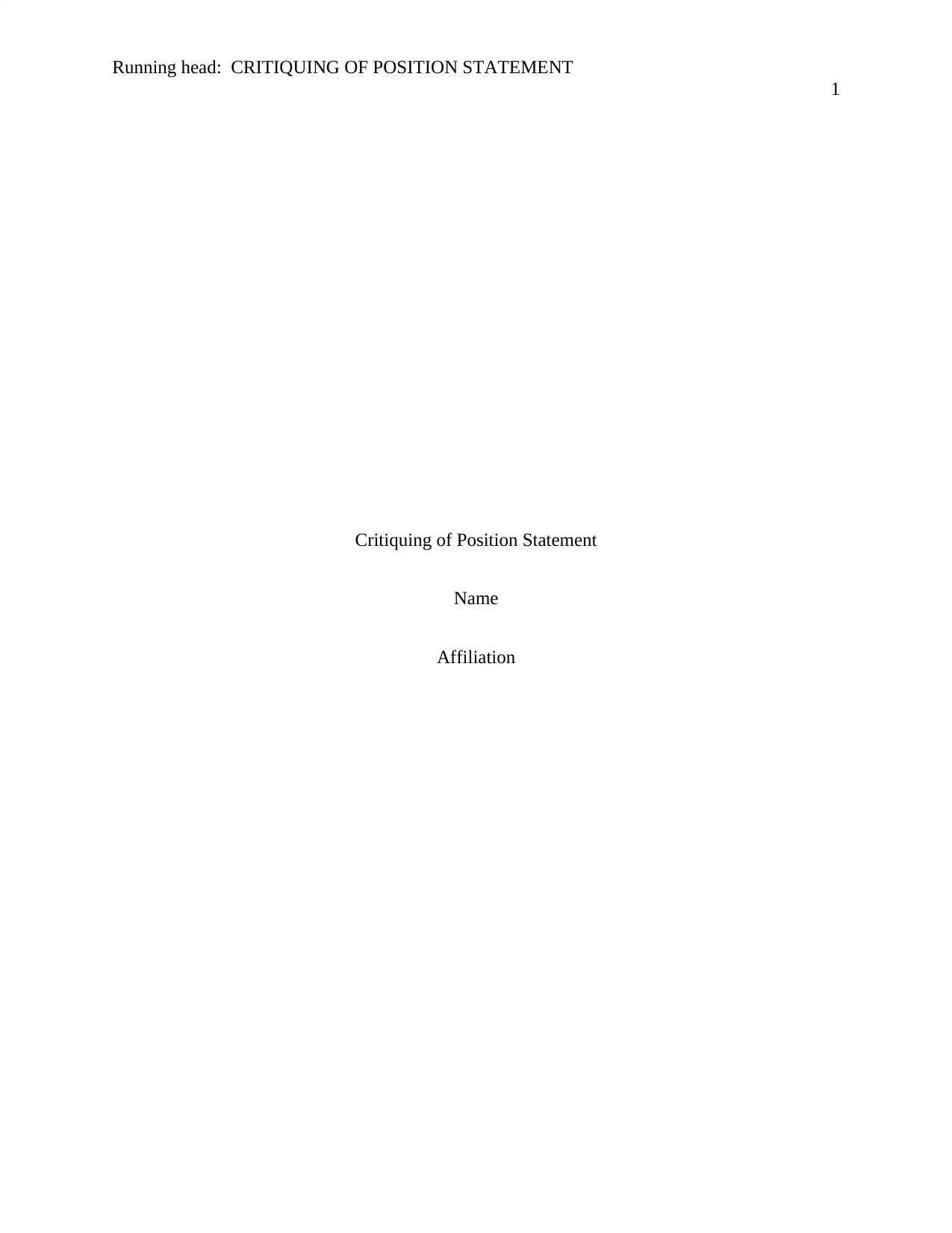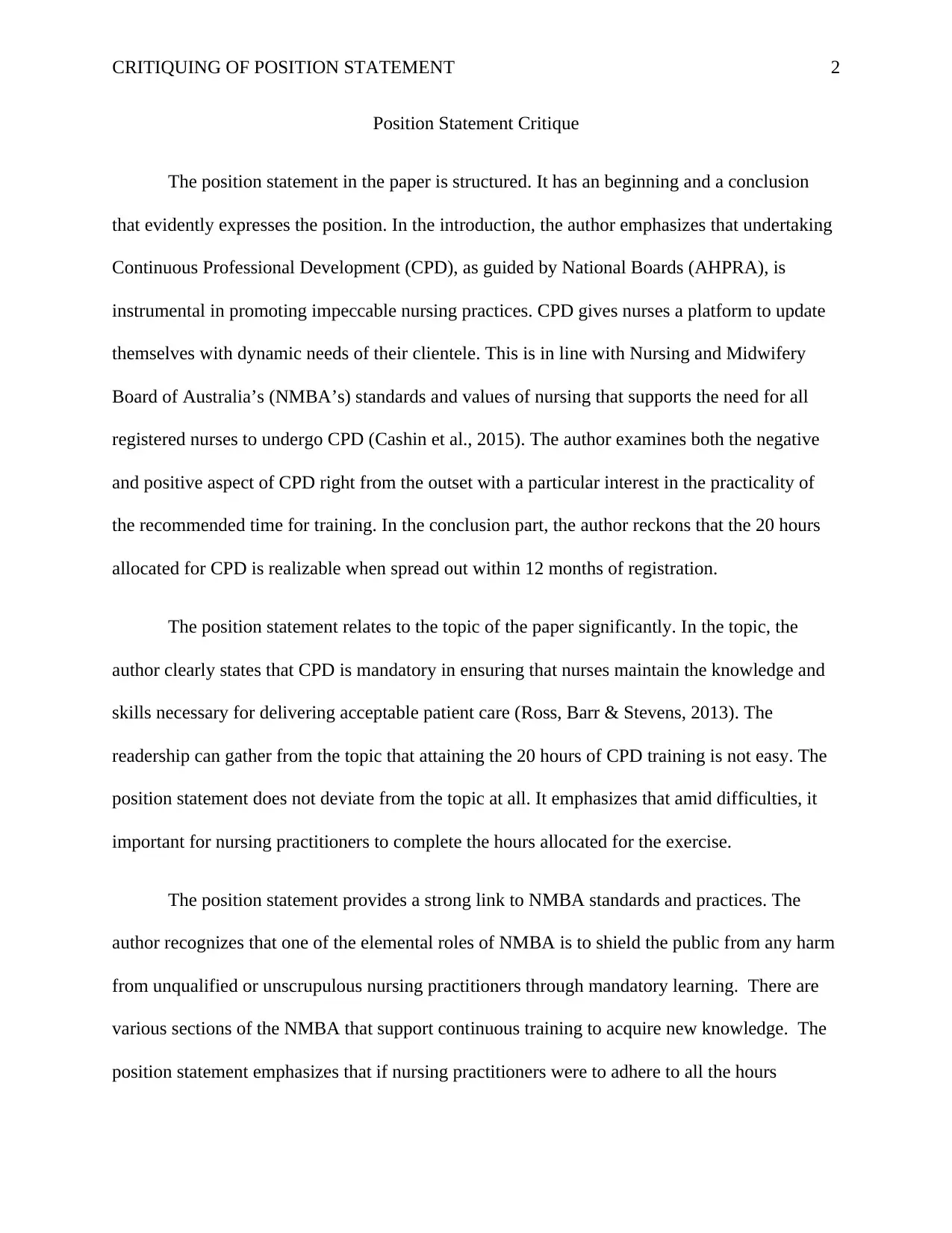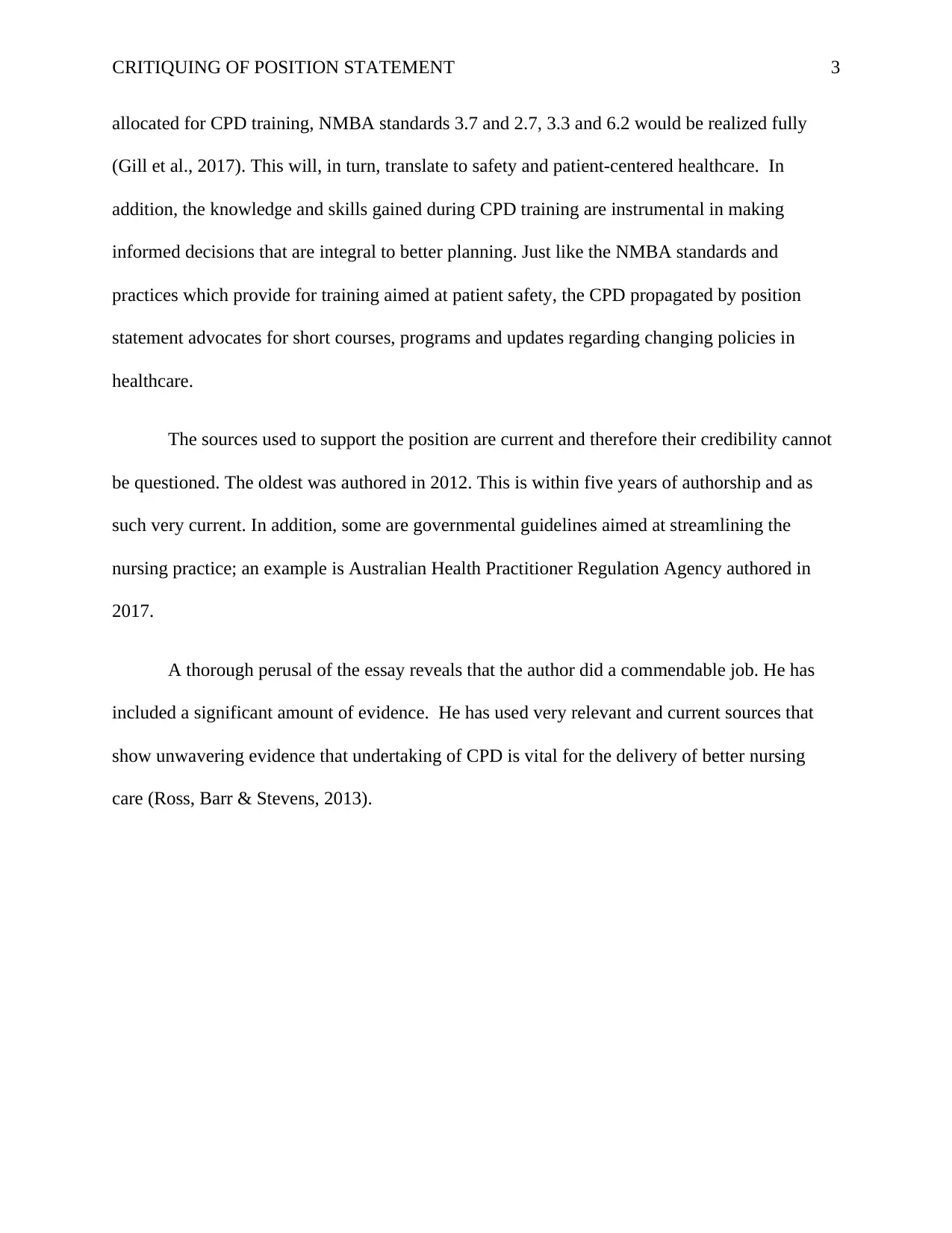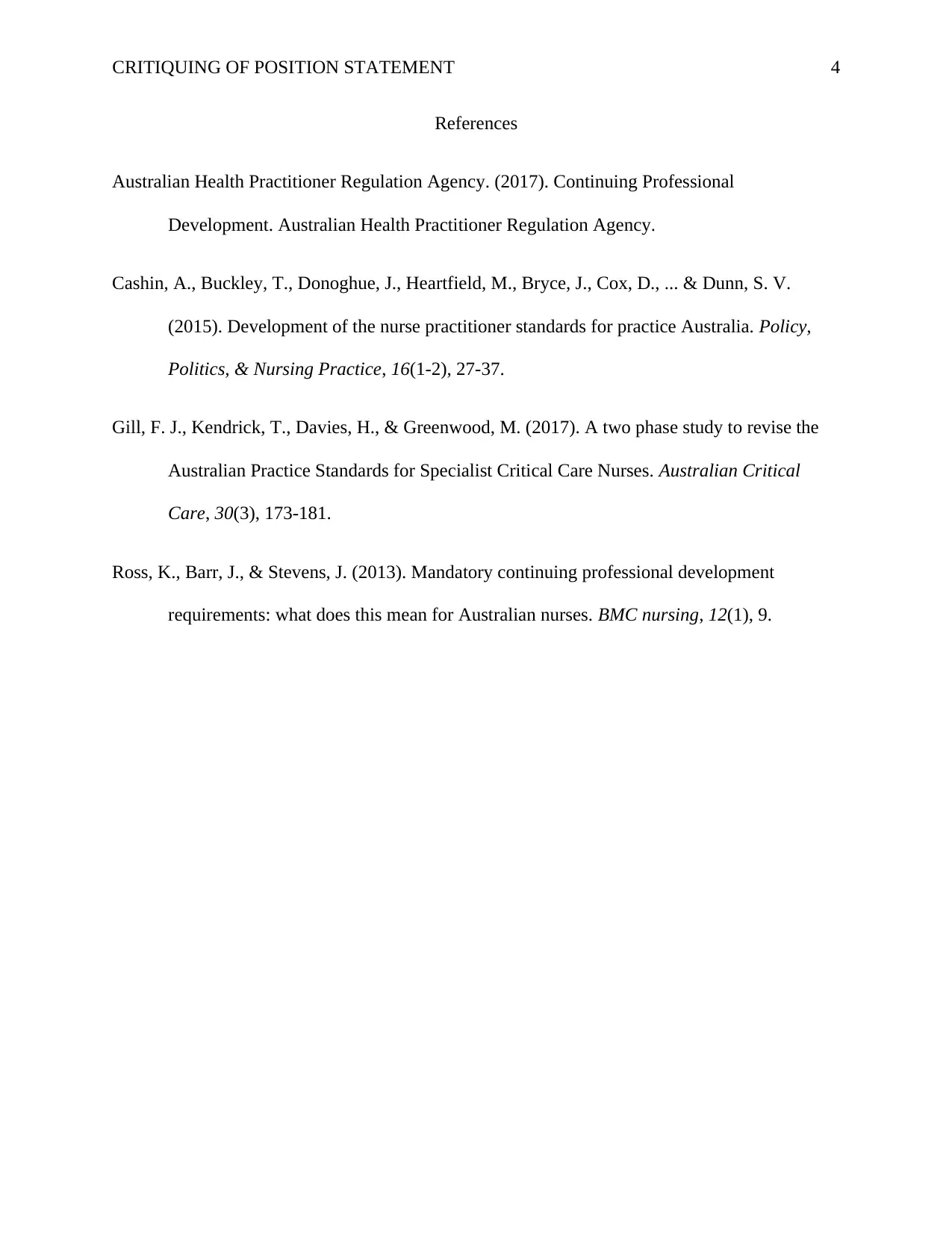Critique of Position Statement: CPD and Nursing Practice Standards
VerifiedAdded on 2019/11/25
|4
|753
|176
Report
AI Summary
This report presents a critique of a position statement advocating for Continuous Professional Development (CPD) in nursing. The analysis evaluates the structure of the statement, its relevance to the topic, and its alignment with the Nursing and Midwifery Board of Australia (NMBA) standards and practices. The critique examines the author's arguments, including the practicality of the recommended CPD hours, and assesses the supporting evidence from current sources, such as the Australian Health Practitioner Regulation Agency. The report highlights the importance of CPD in maintaining nurses' knowledge, skills, and delivering acceptable patient care, emphasizing the link between CPD and NMBA standards related to patient safety and informed decision-making. The report concludes with a positive assessment of the author's work, emphasizing the use of relevant and current sources to support the position that CPD is vital for better nursing care.
1 out of 4











![[object Object]](/_next/static/media/star-bottom.7253800d.svg)